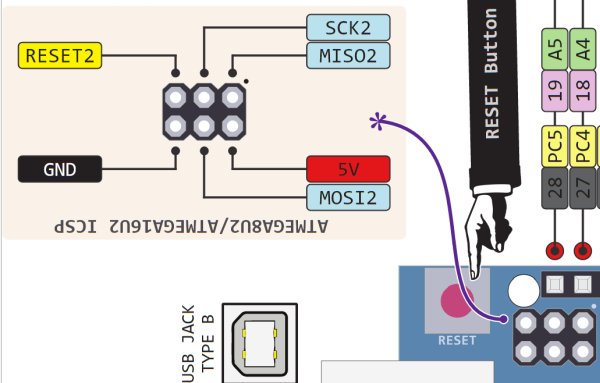

- #Electroschematics arduino uno pinout how to
- #Electroschematics arduino uno pinout software
Embedded C Firmware Library : Arduino / Atmega328p: avr_timer0.h Source File. Kelebihan mikrokontroler AVR dibandingkan dengan mikrokontroler lain yaitu AVR memiliki kecepatan eksekusi program yang lebih cepat karena sebagian besar instruksi dieksekusi dalam satu siklus clock, selain itu mikrokontroler AVR memiliki fitur yang lengkap (ADC internal, EEPROM Internal, Timer/Counter, PWM, Port I/O, komunikasi serial, dll. System Tick Count Frequency depends on the Prescaler and Timer Mode. The System Tick Count is used by the delay functions. This library supports System Tick Count in NORMAL, CTC, FAST PWM and PHASE CORRECT PWM MODE. This library supports Timer-0 based delay and PWM generation. It supports up to 10 PWM channels (more can be added) and it's suitable for led dimming, DC. #Electroschematics arduino uno pinout software
This library is based on "AVR136: Low-Jitter Multi-Channel Software PWM" application note.
Multi-channel software PWM library for AVR microcontrollers | ATmega328P What you do when you run out of PWM pins on hardware? You make software PWM of course. #Electroschematics arduino uno pinout how to
While I understand the principle behind PWM, I'm not sure how to implement a PWM-type communication channel on an AVR. A number of "semi-intelligent" modules (servos, motor controllers, GPS modules, sensors, etc) use PWM signals, either to communicate values to the uC, or to receive commands from the uC. It basically means it can count from 0 to 2^8 255. Let us start our exploration with timer 0. Atmega32 has 3 timer units, timer 0, timer 1 and timer 2 respectively.
Pulse width Modulation(PWM) Generator: PWM is used in speed control of motors and various other applications. Connect a LED with resitor to pin PB4 (physical pin 16) Now you should have a blinkining Led on your Attiny 2313. Upload your sketch: Select File->Upload using programmer. Select Attiny2313: Tools->Board-> Select ArduinoISP: Tools->Programmer->Arduino as ISP. Open the blink sketch from the examples->Basic->Blink. I'd use an LED (with a current limiting resistor) instead of the motor until you get the kinks worked out just to keep things simpler. This should let you set up PWM out on Arduino pin 9 or 10 and use the m(pin, duty) function to change the duty cycle (the "analog" out). This is a lightweight library for keeping track of time to millisecond accuracy, the data type for storing milliseconds can be easily configured, it supports 'unsigned long long' which can keep track of time for 584.9 million years before overflowing! Any clock frequency up to 20MHz can be used, most of. NewPWM requires PWM.h from GoogleCode: arduino-pwm-frequency-library. 
Then, finally, I searched on Stack Exchange Arduino and found this answer from Mavidad, to Generating PWM signal 1-2 ms 333 Hz ).
I searched google for ages, couldn't find anything.






 0 kommentar(er)
0 kommentar(er)
